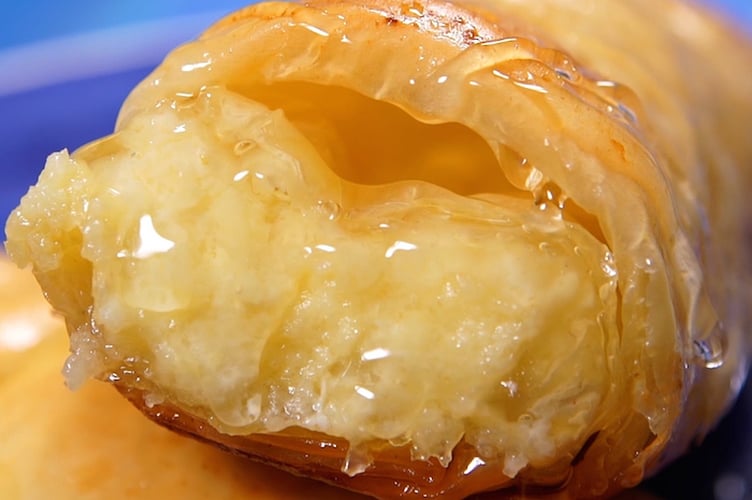
Greece is known around the world for its delicious cuisine, and Greek desserts are no exception to this rule.
Classic Greek flavors such as orange, cinnamon, honey, and sesame make Greek sweets some of the most delectable in the world.
Revani: A semolina cake from northern Greece
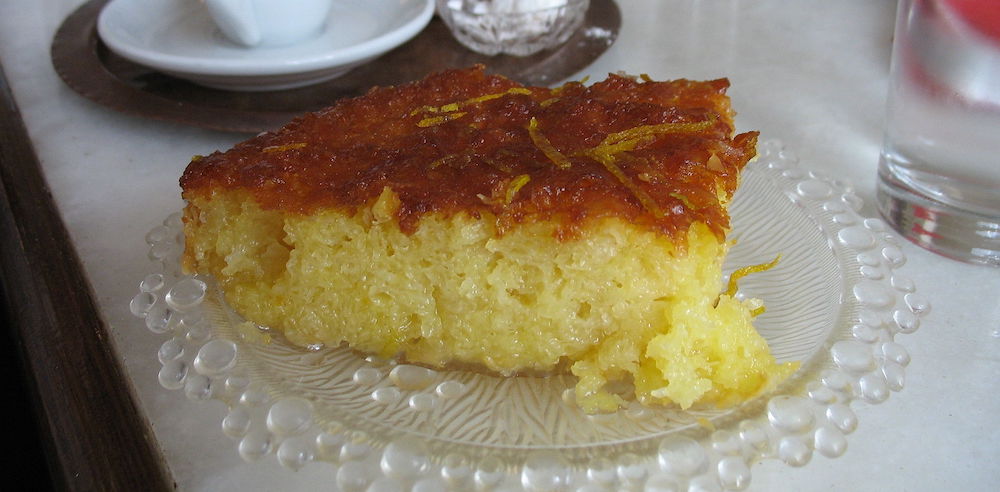
Revani, also known as ravani or samali, is a delicious semolina-based cake that is soaked in sweet syrup that has been flavored with citrus. The dessert is associated with northern Greece, particularly the city of Veroia, where traditional sweet shops make revani according to a recipe from Byzantine times.
Variations of the sweet semolina cake can be found across the Mediterranean, Middle East, and the Balkans, particularly in Greece, Egypt, and Turkey.
Bougatsa, a beloved Greek dessert

Bougatsa with cream is one of the most popular sweets in all of Greece. Traditionally associated with northern Greece, particularly the city of Thessaloniki, Bougatsa with cream is a favorite amongst Greeks all across the country.
The pastry is made of phyllo dough filled with creamy custard and topped with cinnamon and powdered sugar. In much of Greece, it is important to be specific and state “bougatsa with cream,” as there is a savory version of the pastry that is filled with meat.
The most traditional Greek dessert of all: Spoon sweets
Spoon sweets, or pieces of preserved fruit in sweet syrup, have historic roots in Greece. The delicious age-old tradition in Greece of offering spoon sweets to visitors originated in the fourteenth century, when the Byzantines adopted the custom from Arab traders.
You can find spoon sweets made out of a variety of fruits, including sour cherry, figs, and even orange rinds. Many people eat spoon sweets plain or spooned on top of Greek yogurt.
Ryzogalo, Greek rice pudding
Ryzogalo is the Greek version of rice pudding. Made with delicious Greek milk, rice, and cinnamon, the comforting Greek dessert, served cold, is a favorite during the hot summer.
Melomakarona, a favorite Christmas cookie
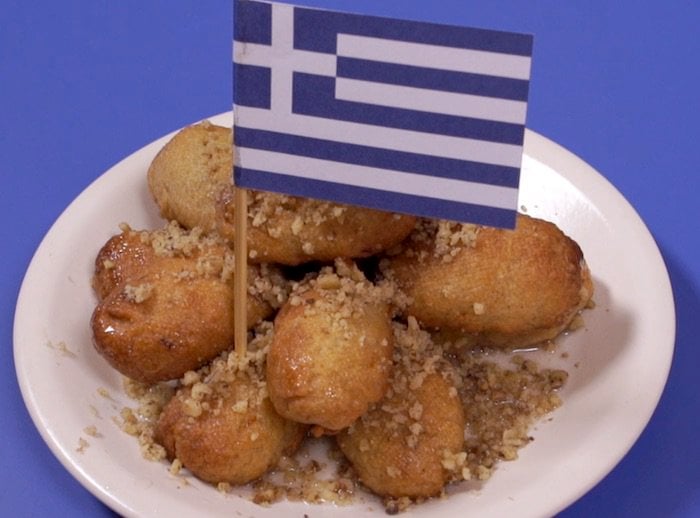
Melomakarona are the delicious Greek cookies served around Christmastime. Made with olive oil, flour, honey, and citrus, melomakarona are much healthier than most holiday treats. The addition of cinnamon and walnuts make melomakarona simply irresistible.
The origin of the scrumptious cookie dates all the way back to ancient Greece. At funerals, ancient Greeks would eat a barley mixture, called makaria. Scholars argue that through the years, makaria developed into the cookie we know today. The addition of honey, or meli in Greek, to the cookie, gives us the name melomakarona.
The iconic Galaktoboureko
This dessert consists of layers at the top and the bottom and is filled with a custard. It is cut into square portions, or rolled into individual servings and smothered in a clear, sweet syrup. The custard may be flavored with lemon, orange, or rose water.
It is notoriously difficult to make, but galaktoboureko is one of the most popular desserts in Greece.
Halvas
The semolina-based halvas (sold as “Halvah” in the US) is a common food found in the Balkan countries, Turkey, and Israel and is usually homemade.
It is a very plain and densely-grained confection made of ground sesame seeds, sugar, water and oil. The ground sesame seed is sweetened either with honey or “petimezi” while the syrup is made from the must of grapes. It is formed into a round shape and baked as a loaf.
Kourabiedes

Kourabiedes are a kind of shortbread cookie, perfectly sweet and satisfying, filled with almonds and topped with powdered sugar. Depending on the region, the dough for Greek kourabiedes may also include a splash of brandy or rosewater for some extra flavor.
The word kourabiedes comes from the Turkish work kurabiye, which itself was borrowed from the Arabic qurabiya, all of which refer to this type of biscuit. Cookies like kourabiedes are made across the Balkans and the Middle East.
Baklavas, the quintessentially Greek dessert
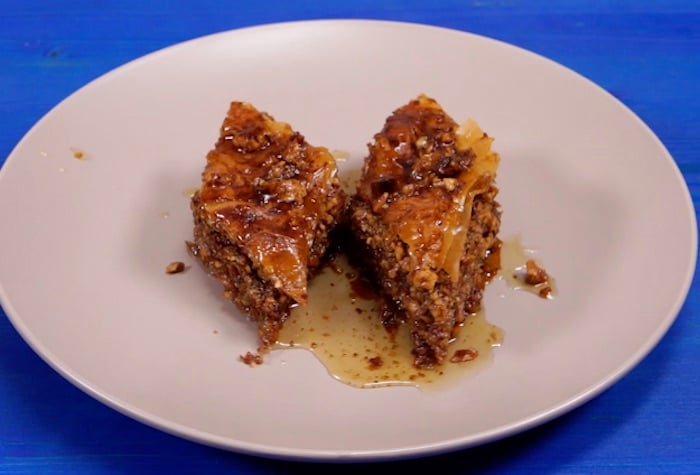
Baklavas, or baklava, is likely one of the most famous, yet controversial, Greek desserts. The delicious sweet is made from crispy layers of phyllo dough filled with chopped nuts, usually pistachios, and sweetened with honey or syrup.
There is a persistent debate as to the origins of the sweet, however. Many ethnic groups such as the Greeks, Turks, and Middle Easterners all claim baklava as their own, and prepare it in their own way.
Greek donuts, or loukoumades
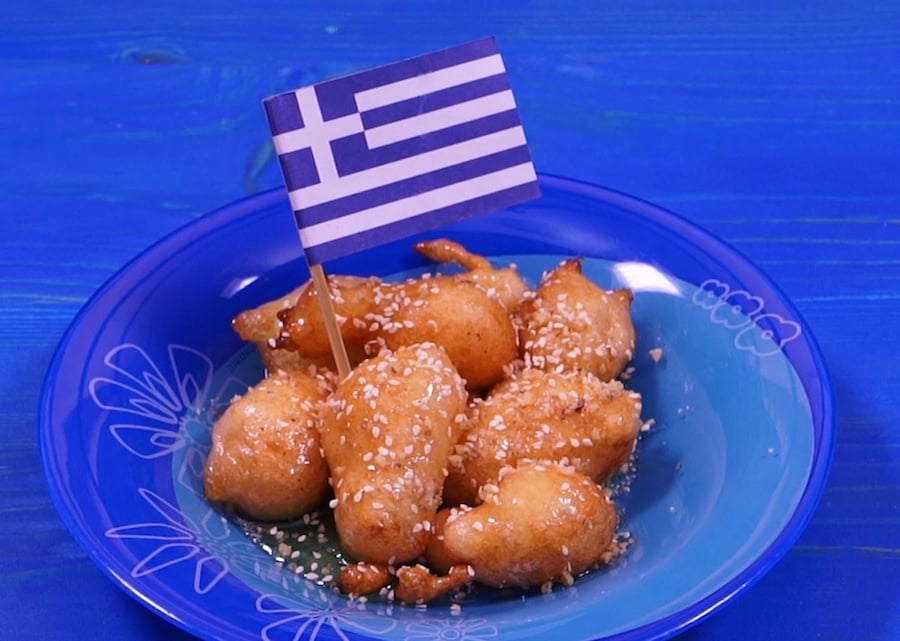
Loukoumades are heavenly fried dough, served warm with honey and drizzled with walnuts and cinnamon, or even sesame seeds.
Loukoumades may be the oldest recorded dessert in the world, first served to the winners of the Greek Olympics, according to Greek poet Callimachus, who referred to them as “honey tokens.”
Now, widely accessible as a street food, loukoumades have been elevated to a gourmet level and are now filled with Nutella, vanilla, and all sorts of different flavors. However, there’s nothing like the traditional, original, and simple loukoumades of times past.
Tsoureki, the traditional Greek Easter bread eaten all-year round
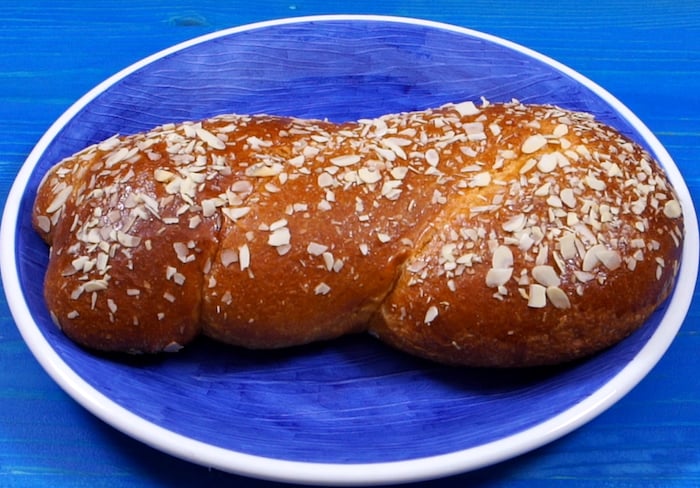
Tsoureki (τσουρέκι in Greek) is the traditional, sweet yeast bread Greeks make every year on Holy Thursday and eat on Easter Sunday.
The name tsoureki comes from the Turkish word “corek” which refers to any bread made with yeast dough. There are many kinds of corek, both savory and sweet, which appear in various shapes and sizes depending on the region.
Today, tsoureki has become an all-year-round pastry. It comes in various versions, such as filled or covered with chocolate and nuts, and it can even be filled with custard, or dipped in syrup. Even eaten plain, this delicately sweet bread is delightful and refreshing after the long privations of the Lenten period.
See all the latest news from Greece and the world at Greekreporter.com. Contact our newsroom to report an update or send your story, photos and videos. Follow GR on Google News and subscribe here to our daily email!



